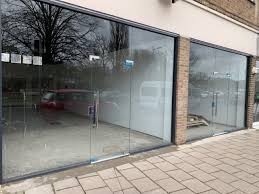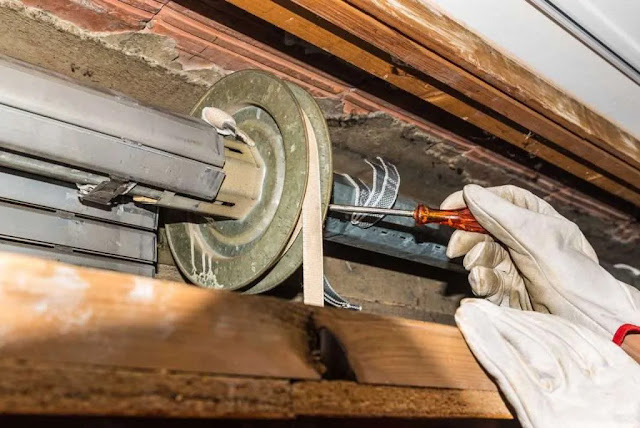How Do Glass ShopFronts in London Enhance the Aesthetics of Commercial Streets?
London is a busy city that is well-known for its magnificent architecture, which combines modern innovation with old-world elegance. Glass Shopfronts in London are an architectural feature that stands out for its remarkable visual appeal and commercial value among the city's famous skyline and historic attractions. These translucent facades have revolutionized how companies engage with their urban surroundings and have grown to be an essential feature of London's corporate scene. In this blog, we examine the significance of glass storefronts in London, examining how they add to the city's distinct identity from an aesthetic and functional standpoint.
Glass Shopfronts In London - Blending Modernity and Tradition
London's architectural design is a historical and innovative tapestry. Glass storefronts are a fantastic example of how tradition and modernity may coexist together, summarizing the spirit of the city. Glass front shop enterprises lend a touch of contemporary elegance while complementing the surrounding architecture.
The city's many architectural styles are among its most striking attributes. Glass storefronts blend in beautifully with these diverse architectural styles, whether they are seen in the modern buildings of the City of London or the Victorian elegance of Soho. Glass's transparency creates a unique dynamic that improves the overall beauty of the cityscape by letting visitors see both the interior and outside.
Accessibility and Openness:
Creating a link between the urban environment and the business sectors it contains is essential in a city that never sleeps. Shopfront Glass encourages people to walk around and see what's behind the façade. The distinction between interior and outdoor areas is blurred by this accessibility, giving the impression that London's streets are extensions of the companies themselves.
The display windows, which provide goods, artwork, or services with an irresistible visual appeal, attract passersby. Because glass fronts are transparent, obstacles are removed and prospective consumers may decide for themselves whether or not to enter the store. Businesses gain from this as it increases foot traffic, and it also livens up the streets as more people interact with the city.
Energy Efficiency and Natural Light:
Although London's weather is infamous for being unpredictable, it is truly beautiful when the sun shines. Utilizing as much natural light as possible, Stainless steel or glass storefronts brighten interior spaces and lessen the need for artificial lighting. This supports the city's environmental goals by promoting energy efficiency initiatives and fostering a welcoming environment for shoppers.
Increased natural light has been shown to have psychological advantages, improving mood and making shopping more enjoyable. These minor details may have a big impact on how people view and interact with the city's business offerings in a busy metropolis like London.
Putting Brand Identity on Display:
London is a cultural and intellectual melting pot, and this variety is reflected in its enterprises. Glass storefronts are a great place for companies to display their brand. Shops may reach a wide range of customers by communicating their ideals and products via imaginative designs, logos, and displays.
It is critical to build a unique brand identity in a competitive market. Glass storefronts provide companies the opportunity to express their narrative before a consumer walks through the door. A well-designed storefront may make an impression that doesn't go away, making a company recognizable to both residents and visitors.
Preserving the Past while Promoting Innovation:
A major component of London's attraction is its history, and keeping the past alive is an ongoing effort. Glass storefronts offer a way to honor old structures while adjusting to the demands of contemporary business. This creative use of space benefits the city's cultural fabric in addition to its economy.Modern materials combined with traditional architecture highlight London's dedication to development while honoring its history.
Conclusion:
Glass Shopfronts in London are more than simply architectural features in London's urban fabric; they are storytellers that invite people to interact with the city and its businesses in novel and fascinating ways. These transparent facades improve the city's aesthetic appeal and economic vitality, in addition to their function in sustainability and branding. London is a very alluring location for both people and tourists, and as the city develops, its glass shopfronts serve as a tribute to the peaceful coexistence of history and modernity.
FAQs:
Q: Which glass, if any, is toughened glass used in the storefronts?
A: The strongest glass that can be purchased commercially is toughened glass. For this reason, using it in a storefront display comes highly recommended. Tempered glass is really 25% stronger than laminated glass as it is five times stronger than annealed glass.
Q: Can shopfronts made of glass be customized?
A: Yes, glass shopfronts may be made to match every business's unique needs and style choices. Glass types, frame materials (such aluminum or stainless steel), color selections, door configurations (slide, automated, swing), and branding components (logos or decals) may all be customized.
Q: In glass structures, what kind of glass is used?
A: In the building sector, glass that has been toughened or tempered is commonly utilized. It is tempered to reduce the likelihood of breaking. If it does shatter, the shards are tiny and have rounded edges. Additionally, toughened glass is typically shatterproof.
Q: Are glass storefronts appropriate for all kinds of enterprises?
A: Glass shopfronts are adaptable and appropriate for a wide range of establishments, including restaurants, cafés, boutiques, offices, and retail stores. They are a popular option in many businesses since they have a modern appearance that may go well with various architectural designs and corporate identities.
Q: Why do commercial structures employ glass?
A: Glass is able to transmit, refract, or absorb light. It has the power to enhance the beauty and modernity of any structure. The use of glass in interior design and building facades improves the atmosphere. Rooms seem more spacious and airy, with lots of natural light.
Q: Are storefronts made of glass sturdy and secure?
A: Yes, contemporary glass storefronts are made to be quite secure and resilient. Safety glass that has been laminated or hardened to withstand impact and shatter is used to make them. To improve security and discourage intruders, sophisticated locking systems and security measures can also be included.




Comments
Post a Comment